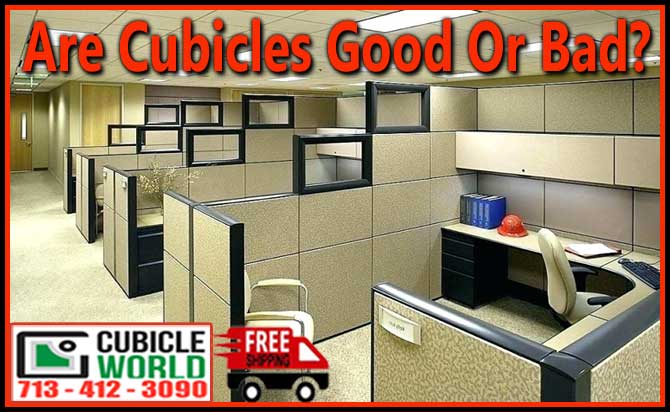
Still, many others seem to be vehemently opposed to them, considering them to be lifeless and confining structures meant to strip modern workers of their individuality and creativity. That’s an interesting sentiment in juxtaposition to the more optimistic view of the 1960s, when these workstations were taking shape as a way to empower the average office worker.
In any case, if you are looking to furnish your own office, the idea of purchasing cubicles might have entered your mind once or twice. Keep in mind that in actuality, cubicles are good or bad simultaneously, depending on how they are being used. Since one company is so different from the next one, then the best way to weigh the pros and cons of cubicles is really within the context of your specific company needs. In other words, thinking of a cubicle as a one-size-fits-all solution for businesses can end up leaving you disappointed and unsatisfied with cubicles.
One of the first things worth noting about cubicles is how flexible they are, on all levels. Not only can they be specified to support the personal workflow of their users, in terms of size, features, and even style, but as new technology emerges and develops, so do the forms that cubicles take on. In the discussion of whether cubicles are good or bad, how can this be seen as anything but a positive thing?
With the importance of the digital workstation growing over the decades, workstations have included features that have welcomed the computer as part of your workday. Rolling keyboard trays emerge and hide under desk surfaces as they’re needed, grommets help to transfer equipment cables to the nearest power outlet–sometimes integrated into the cubicle itself, racks under the desk can suspend the computer’s CPU and clear it from floor debris or accidental kicks from its user.
Many studies have preoccupied themselves with trying to understand the level of individual privacy that offices should provide in order to optimize workers’ productivity and boost their morale. If the verdict of whether cubicles are good or bad hangs on their openness versus their privacy, then that verdict likely won’t be in for a while. Before the advent of the cubicle, workplaces often took the form of the “bullpen” layout, where workers would toil side-by-side in a large, open room with a central supervisor’s office watching over them.
While the partitioned cubicle seemed like a great way to restore focus, individuality, and even dignity, we’ve recently seen a trend that’s re-embraced the bullpen—now the “open office”—for its ability to open creative communication among office employees. Finally, freedom from the prison-like confines of the sea of cubicles. However, workers have once again complained of distractions and personal discomfort from a lack of privacy.
Within this context, whether cubicles are good or bad is hard to determine. However, cubicles have come far since their claustrophobic “sea of cubicles” phase. So much of the ability to balance privacy and openness is wrapped in the specific features of their partitions, which can take countless forms in material and size.
They can be the traditional single-user setup utilizing anywhere from a single partition with end caps to four full-height walls with a door. Larger cubicles can accommodate multiple employees within high partitions while opting out of internal dividers. Or cleverly designed workstation clusters can trade in perimeter partitions for low-height dividers in between each employee. Fabric and glass are popular materials for reducing noise and increasing light emission as well.
Another way in which cubicles are good or bad to people may be in terms of their features. In the past cubicles seemed clumsy and monotonous in how they delivered their features to individual users. Even larger, more spacious cubicles felt generic as they failed to respond to users’ needs.
Today, with so many options to choose from, even smaller cubicles can feel more welcome as their forms integrate better with an employee’s unique workflow. Overhead storage bins can hold reading materials while providing LED task lighting underneath. Tack boards and tool rails can be used for personal items and notes, as well as storage of frequently-used items. Full-height lockers can anchor one end and offer storage for personal items as well as hardcopy documents and work supplies.
In the debate about whether cubicles are good or bad, it’s pretty clear what side of it that Cubicle World is on. We believe in the potential that cubicles have in shaping your unique office space into an environment that achieves worker happiness and productivity, as well as overall efficiency of your company. Open your mind to the possibilities of cubicles and give us a call for a free consultation, where we can find the cubicles that are right for your space. Don’t forget that with every order you place, shipping is 100% free. Give us a call today!
Are Cubicles Good or Bad? – Free Quote – 713-412-3090
